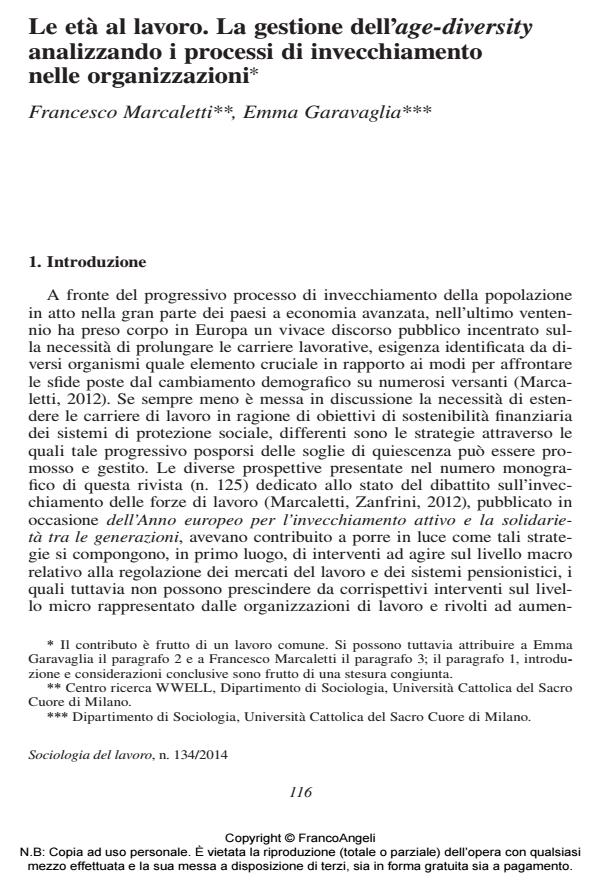Ages at work. The management of age-diversity by analysing the quality of ageing at work processes in companies
Journal title SOCIOLOGIA DEL LAVORO
Author/s Francesco Marcaletti, Emma Garavaglia
Publishing Year 2014 Issue 2014/134
Language Italian Pages 18 P. 116-133 File size 134 KB
DOI 10.3280/SL2014-134007
DOI is like a bar code for intellectual property: to have more infomation
click here
Below, you can see the article first page
If you want to buy this article in PDF format, you can do it, following the instructions to buy download credits

FrancoAngeli is member of Publishers International Linking Association, Inc (PILA), a not-for-profit association which run the CrossRef service enabling links to and from online scholarly content.
Recent reforms of retirement systems throughout Europe have shown the need - within work organisations - for HR policies addressed to face the challenges of an increasing employees’ mean age and of an imbalanced age mix among the workforces. Based on the analysis of the organisational literature on age management, as well as of the evidence-based achievements of the research on this topic, the paper aims at introducing the architecture and the first empirical findings of an age management tool - the Quality of ageing at work questionnaire - QAW-q - addressed to survey the individual process of ageing at work within specific work organisations. Based on the key elements of the workability concept, the QAW-q aims at producing results that support HR managers and employers in managing an older and more age-diverse workforce by analysing the influence of the individual different kinds of age (biological age, job seniority in the position and years of payment to social security schemes) on the individual perceptions about the quality of work. The paper presents the first results from the pilot use of the QAW-q in some private firms and local administrations in Italy.
Keywords: Age management, workability, age, ageing, quality of work, HRM
- Parti sociali e invecchiamento della forza lavoro: strategie d'azione e rappresentanza dei lavoratori over 50 in tre settori Dario Raspanti, in GIORNALE DI DIRITTO DEL LAVORO E DI RELAZIONI INDUSTRIALI 185/2025 pp.121
DOI: 10.3280/GDL2025-185007
Francesco Marcaletti, Emma Garavaglia, Le età al lavoro. La gestione dell’age-diversity analizzando i processi di invecchiamento nelle organizzazioni in "SOCIOLOGIA DEL LAVORO " 134/2014, pp 116-133, DOI: 10.3280/SL2014-134007